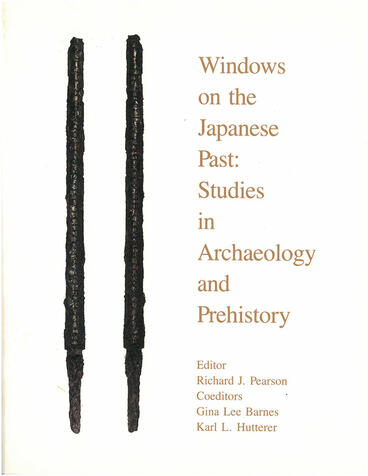Windows on the Japanese Past
Studies in Archaeology and Prehistory
A monumental cross-section of approaches to early Japanese history and archaeology exploring the history and dynamics of human populations and their cultures in East Asia
Description
Windows on the Japanese Past reports the state of the art in the archaeology and prehistory of Japan by presenting both original research and reflections by leading scholars on both sides of the Pacific. The 649-page book is divided into five sections: Part I. BackgroundPart II. Race, Language, and Culture: Japanese IdentityPart III. Prehistory, Culture History, and SocietyPart IV. Typological Studies in Japanese ArchaeologyPart V. Japanese Cultural Resource ManagementThe discussions move from studies of the vegetational history of Japan and premodern “archaeology” to studies of Japan’s link—in race, language, and culture—to continental peoples and cultures. The third section presents detailed analyses of current archaeological research in Japan. These articles are grouped to provide the reader with a history of Japan as seen through archaeology—the section is subdivided into the Paleolithic, Jomon, and Yayoi/Kofun periods. Section four focuses on typology, and both presentations outline the way in which Japanese archaeologists formulate their typological categories, as distinct from Western archaeologists. Pottery is the main focus. The final section details the intricate system that Japan has devised for preserving archaeological sites, as well as the problems surrounding those preservation efforts. The 110-page glossary of Japanese archaeological terms is itself an important scholarly contribution.
Richard J. Pearson is Professor Emeritus of Archaeology at the University of British Columbia. Gina Lee Barnes is Professor emeritus of Japanese Studies at Durham University. Karl L. Hutterer was Professor of Anthropology and th
Reviews
“A monumental work . . . As an interested historian I can think of no comparable book, in any area of Japanese studies, that does so much to record the history of a discipline, to define its current practices, and to outline its ‘agenda.’”
—Mary Elizabeth Berry, University of California, Berkeley
“With publications of Windows of the Japanese Past it is finally possible to present a reasonable course on Japanese prehistory and early history without being a specialist on the subject and without the ability to read Japanese. This will, without doubt, be the book in English on the subject for years to come.”
—Wilhelm G. Solheim II, University of Hawai'i, Manoa

